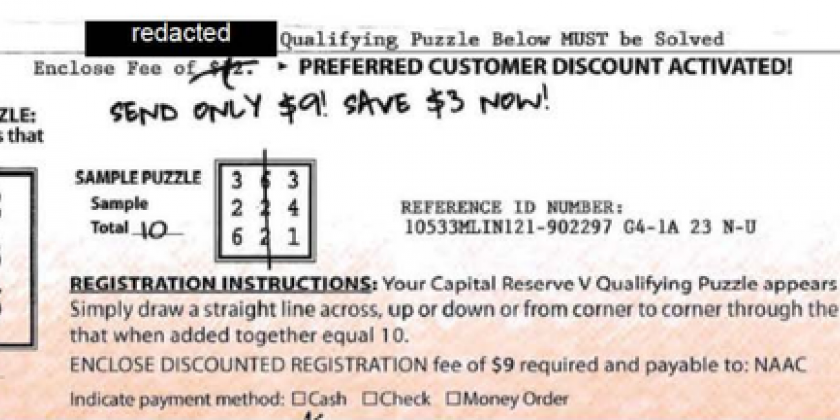Course of the scams
After mainly senior citizens were contacted by advertisers on social media or by email, they paid between $9 and $140 in entry fees for prize competitions with no real chance of winning. Such promotional emails lured, for example, with promises such as "Congratulations, you've won $1,230,946.00." In other cases, simple games of skill were offered without mentioning costs and getting rid of participants in the last round by posing a mathematical problem that was too difficult. Often, participants took part several times before they judged the games to be dubious and realised that there were no prizes. Recommendations ("shares") and mentions ("tagging") of friends on social networks supposedly increased the chances of winning millions. In reality, the operators of Next Gen obtained additional email addresses, to which newsletters with new scam offers were sent out. Supposed lottery participants were then contacted by telemarketers (some from India) and persuaded to pay for worthless or otherwise freely available security software. Alleged security risks from hackers and the feigned danger of emptied accounts through cyberattacks led the victims to make more and more purchases and services that were claimed to come from US authorities or well-known software manufacturers. Some spent thousands of dollars over years on these "services". Next Gen set up business accounts for the telemarketers to maintain the appearance of legitimacy. The damage to about a quarter of a million "customers" is estimated at 110 million since 2013.















